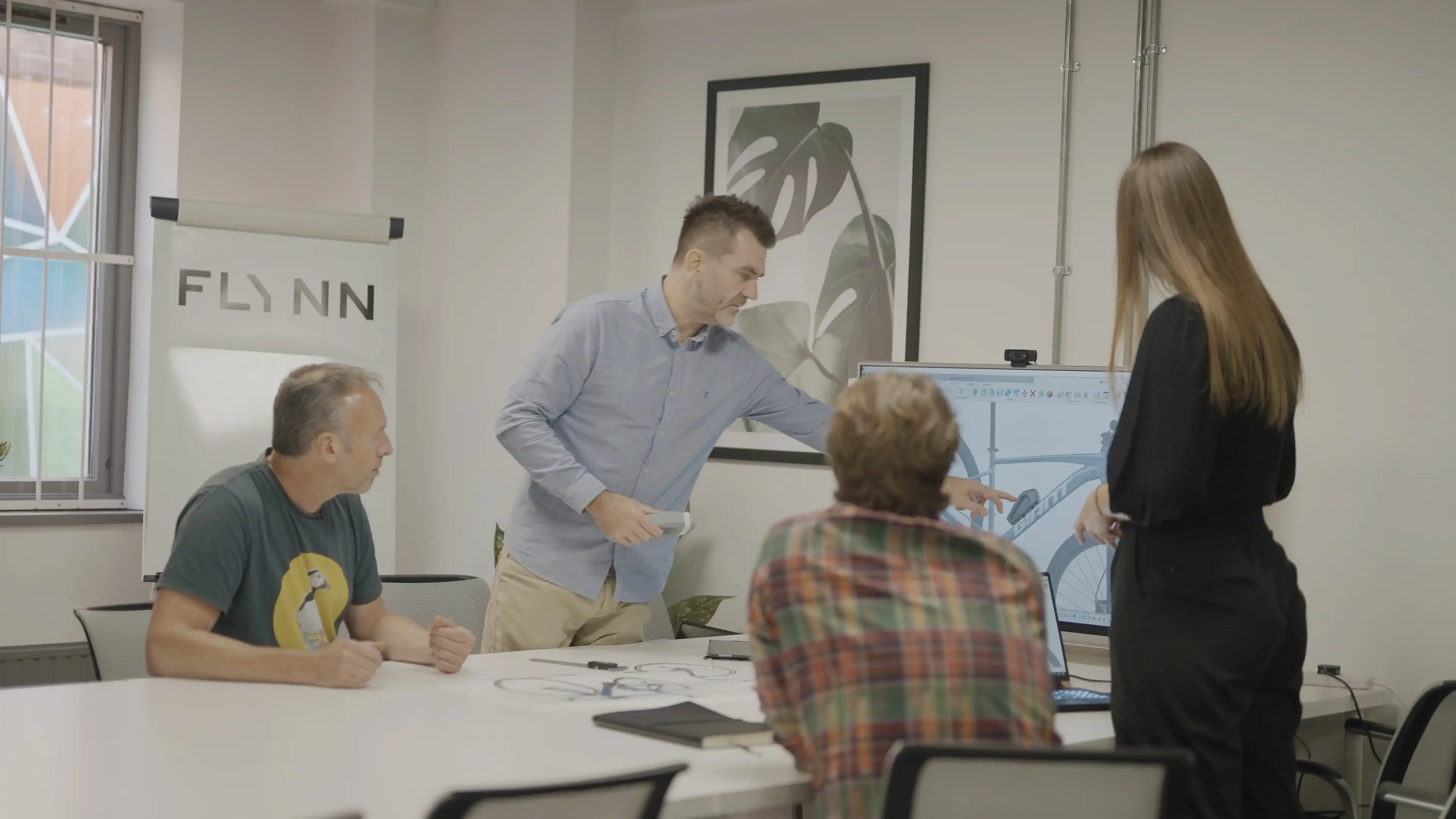Avoiding The Common Pitfalls in Product Development
Avoiding The Common Pitfalls in Product Development
Embarking on the journey of product development can feel daunting, presenting a range of challenges and obstacles that, if left unaddressed, can lead to failure. This is where companies like ours come in; experienced product design consultancies act as allies, guiding you toward a successful outcome. Drawing on over 20 years of industry experience, we’ve compiled this guide to highlight common pitfalls that companies often encounter and to share how we help them navigate and overcome these challenges.
Embedding The Right DNA In the Product

Pitfall: Products are often developed without the essential "DNA" needed for the product to thrive. Just as a weed has the innate qualities to thrive independently, products need the right DNA embedded in their design to thrive on the market. Without this, a product may fall short, failing to truly solve the problem it was designed for, becoming overly complicated or difficult to use, or simply not resonating with its intended audience.
Solution: Define your product’s DNA early and integrate it into every aspect of development. Start by identifying core attributes that make your product unique: Who is the product for? What problem does it solve? What values does it convey? This foundational clarity should influence design, functionality, and even packaging. It’s important that every development decision, no matter how small, aligns with the defined DNA of your product. Involving stakeholders from various departments ensures a shared vision that is consistently implemented across the entire product lifecycle.
Accurately Gauging Market Demand
Pitfall: A common and costly mistake in product development is failing to accurately gauge consumer demand resulting in a launched product that the market doesn’t want or need. Failure to properly read demand leads to a product-market mismatch where the final product doesn’t resonate with its intended audience.
Solution: Investing in thorough market research is essential to building a product that truly resonates with customers. Begin by diving deep into understanding your customers' needs, preferences, and pain points, making these insights a guiding priority. Surveys, focus groups, and competitor analysis can reveal the level of market saturation and highlight areas where current offerings fall short, exposing unmet needs. Tools like A/B testing and beta releases allow you to gauge genuine reactions, refining the product through direct, real-world feedback. Leveraging insights from market research, product analytics tools, or even customer feedback from comparable products can help clarify which features matter most and which markets and segments offer the highest potential. This data-driven strategy not only ensures your product aligns with actual demand but also directs you toward opportunities with the most promise.
Defining a Clear Return on Investment (ROI) Strategy

Pitfall: Many teams focus heavily on the product’s development without considering how it will deliver a return on investment(ROI). Without clear ROI metrics, it’s challenging to measure success and justify ongoing investment.
Solution: Developing a clear ROI plan early in the product development process is essential for guiding financial success. This involves thoughtfully considering elements such as pricing strategy, anticipated production costs, and projected sales volume to create a realistic financial roadmap. A well-structured ROI framework sets specific goals, including target profit margins, expected sales growth, and desired brand exposure, along with defined timelines. Identifying key performance indicators (KPIs) to track after launch—such as break-even points, customer acquisition costs, and revenue growth—enables an ongoing assessment of the product’s financial impact. This forward-looking approach ensures that each pound invested in development is aligned with measurable, strategic outcomes.
Being Solution Oriented Too Early On
Pitfall: It’s common to become solution-focused too early, before thoroughly analysing the problem. Jumping to solutions without fully understanding the issue can lead to an attachment to an idea before truly exploring the problem you’re trying to solve. This often results in a solution that doesn’t effectively address the core issue and may fail to resonate with the intended users.
Solution: At the outset of product development, approach the problem you’re aiming to solve from first principles, resisting the urge to jump to solutions. Focus on analysing the problem deeply: what exactly is it, what factors cause it, who is affected, and where it occurs. Only after you fully understand every aspect of the problem being solved can you begin considering solutions that comprehensively address it. Maintaining complete objectivity at this stage is crucial to avoid baking in potential flaws into the design from the start.
Failing To Explore Other Design Options

Pitfall: Clinging too tightly to the initial design concept can lead to missed opportunities for a more optimal solution. It's easy to become attached to a first idea, developing a bias that discourages exploring other possibilities. This often results in moving forward with a less-than-optimal approach, ultimately limiting the product’s potential.
Solution: Fostering an iterative design process opens up the space for exploring a variety of possibilities, allowing yourself to move beyond a single concept and consider a spectrum of ideas. Unbiased brainstorming, rapid prototyping and design sprints are invaluable in this approach, enabling swift assessment of different design directions and gathering valuable feedback from the outset. This exploration is comprehensive, focusing not only on aesthetics but also on functionality, usability, and manufacturability, ensuring each design is feasible and practical. As each concept is evaluated, factors such as functionality, effectiveness, cost, user experience, and feasibility are weighed up. This cycle of iteration hones the product, filtering out less viable ideas and ensuring that the strongest, most thoughtfully developed concept advances to the next stage.
Choosing an Unnecessarily Risky Route
Pitfall: Many people mistakenly choose unnecessarily high-risk paths in product development. More often than not, there are alternatives that effectively address the same problem while carrying significantly lower inherent risks. High-risk choices often involve complex technologies, intricate manufacturing processes, or pioneering innovations. Integrating high risk into a product increases the likelihood of setbacks, failures, and reduced ROI.
Solution: Some degree of risk is inherent in product development, especially when pursuing innovation, and we would never discourage creative exploration. However, there are always strategies to mitigate risks without compromising the product's potential. For instance, opting for OEM parts instead of custom-made components, reducing the number of parts, and simplifying mechanisms can help lower risks. It’s crucial to assess these risks when evaluating concepts, leaning toward options that have a favourable balance between innovation and feasibility. Consider risks related to costs, timelines, market conditions, and technical challenges. By strategically planning a development path that minimizes risks while maximizing ROI potential, you can significantly enhance the likelihood of a successful launch and ensure long-term market sustainability.
Underfunding The Project

Pitfall: Insufficient funding during product development can create significant challenges, often resulting in rushed stages, compromised quality, and missed opportunities. Companies frequently underestimate the true costs associated with development or attempt to save money by cutting corners. This miscalculation can lead to budgetary shortfalls that adversely affect critical aspects of the product, such as its overall quality, functionality, and readiness for market launch. When financial constraints force teams to hasten their processes, it can compromise thorough testing and refinement, ultimately jeopardizing the product’s success and diminishing its potential impact in the marketplace.
Solution: Establishing a realistic budget and appropriately investing in product development is crucial for success. Adequate funding ensures that resources are available to create the best possible product. With proper investment, teams can explore multiple concepts, conduct detailed research phases, and engage in several rounds of prototyping. This includes developing custom electronics and implementing comprehensive testing processes, among other vital steps. If your organization faces funding limitations, consider seeking partnerships or attracting investors to bridge those financial gaps. A well-funded project not only provides the necessary resources for thorough development but also offers the flexibility to adapt and enhance the product, ultimately leading to a polished and competitive final offering.
Mistiming Patent Applications
Pitfall: Many inventors find it challenging to identify the optimal time to file for a patent. Filing too early, before the product is fully developed, can restrict future development to the specifics outlined in the patent. This limitation means that if you later want to pursue a better option or alternative design, you will need to file a new patent, adding to the complexity and cost of the process.
Solution: Strategically time your patent filing. Conduct a thorough patent search early on to ensure your idea is unique. Develop the product enough to clarify its unique features but avoid waiting until it’s in production. Collaborate with a patent attorney as well as design consultancy to navigate the ideal timeline, which should align with your product’s development stage and market introduction plans. Early discussions with patent professionals can also help you understand whether provisional patents or full patents suit your strategy best.
Not Utilising Product Design Consultancy

Pitfall: Not utilizing external product design consultants is a common mistake, especially when an internal team feels confident in their abilities. However, an external perspective can bring invaluable insights and opportunities that internal teams may otherwise miss.
Solution: Utilizing the expertise of product design consultants can provide valuable fresh perspectives and specialized knowledge to enhance your development process. These consultants often bring a wealth of industry-specific experience, which can lead to innovative ideas that might not have been considered otherwise. They can refine design decisions, streamline manufacturing processes, and ensure that the product aligns effectively with current market trends. Their objective feedback is particularly beneficial, as it can help identify potential issues that in-house teams may overlook due to their familiarity with the project or inherent biases. Engaging a consultancy early in the process can be instrumental in optimizing your product from every angle, ultimately paving the way for a more successful outcome.
Overlooking Objective Perspectives
Pitfall: It’s easy to fall into the trap of confirmation bias, where teams only seek input that aligns with their existing beliefs about the product. This can lead to skewed decision-making and ultimately hinder the product's success.
Solution: Actively seeking objective, data-driven feedback throughout the development process is essential for creating a successful product. This feedback can come from a variety of sources, including external consultants, user testing, independent market analysis, and insights from stakeholders who were not involved in the initial concept. Such objective perspectives are vital for identifying weaknesses, uncovering blind spots, and validating assumptions that may otherwise go unchecked. It’s important to foster a feedback-friendly environment where criticism is viewed as a valuable tool for improvement. By embracing and implementing constructive feedback, you can shape a well-rounded, user-centric product that truly meets the needs of your target audience.
How Can FLYNN Help You in This Process

Navigating the complex journey of product development requires a keen awareness of potential pitfalls, both obvious and hidden. At FLYNN Product Design, we have been guiding companies through this journey for over 20 years, providing a turnkey solution that spans from concept to manufacturable product.
The common mistakes highlighted in this post underscore the value of collaborating with an experienced design consultancy like FLYNN. We not only anticipate these pitfalls but also possess the expertise to help you avoid them. Our tailored design process is customized to meet your specific needs, and we are not just "yes men" who develop ideas without critical evaluation. Instead, we return to the fundamentals, examining the problem from first principles. This collaborative approach allows us to work with you to create solutions with success baked into their DNA, ensuring an efficient and profitable product development process.
We provide businesses with product design consultancy, industrial design, prototype design & related services.
.avif)


